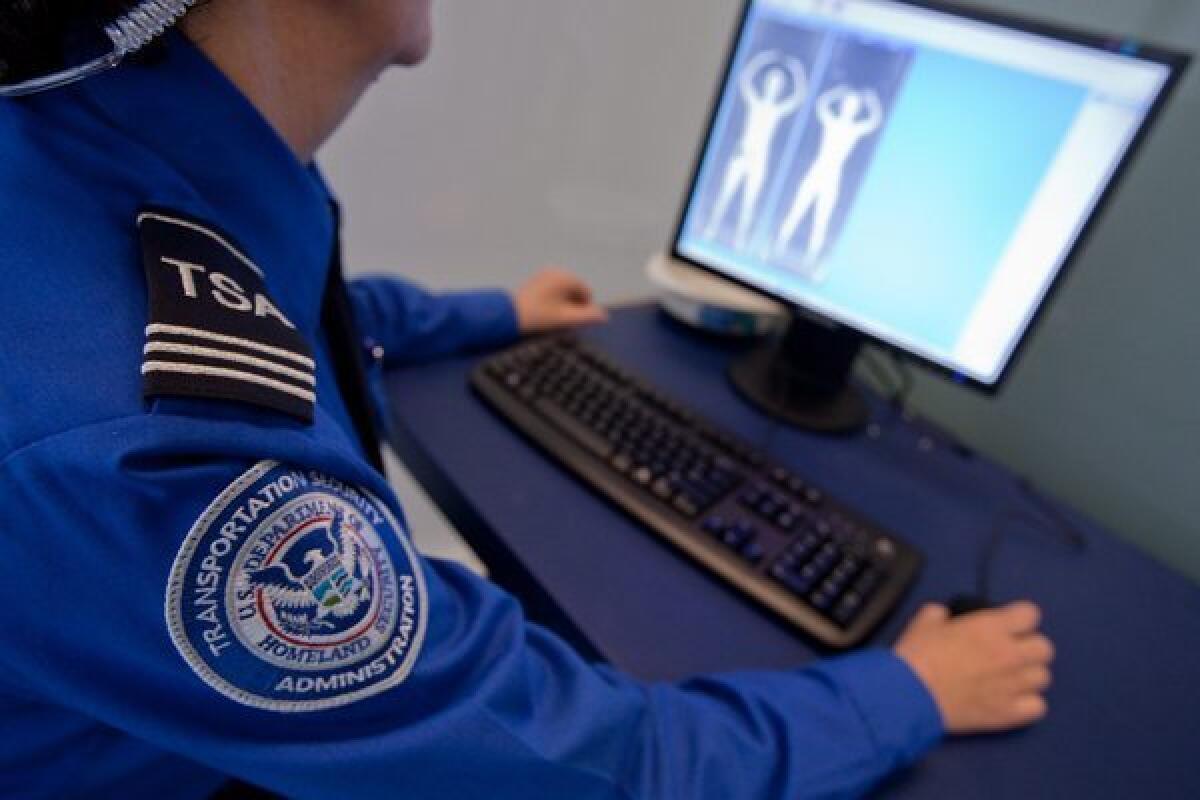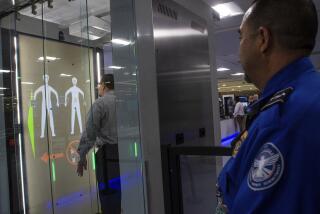Goodbye ‘nude scanners.’ Hello new headache.

- Share via
There’s no appeasing the paranoid, it seems.
The Transportation Security Administration has done away with its controversial “nude scanners,” which took full-body X-rays of passengers to ensure no one would board a plane with hidden explosives.
While some found a comfort in those scanners -- why expose a plane full of people to any vulnerabilities when there’s an easy solution? -- privacy advocates were unsettled that TSA employees could see nude images of passengers’ bodies, even though screeners were walled off in separate rooms. Not to mention, passengers’ faces were blurred in the image. X-ray technology was also cause for concern because it exposed passengers to radiation -- albeit in tiny amounts.
Instead of full-body scanners, The Times’ Hugo Martín reports that “the TSA now relies solely on millimeter-wave scanners, which previously generated similar nude images but have been upgraded to portray a generic figure on which they point out objects concealed on travelers’ bodies.” Sounds like a good compromise, right?
But actually, privacy folks are still wringing their hands, worried that the scanners are retaining the images they capture. “There are lingering questions about whether the millimeter-wave devices are retaining images,” says Marc Rotenberg, executive director of the Electronic Privacy Information Center.
Personally, I don’t mind if the TSA captures me looking like a gingerbread (wo)man. In our surveillance culture, where there are cameras monitoring so much of what we do (when we don’t even realize it, no less), these TSA images hardly register as cause for concern. (If I were one of these people, however, I’d feel violated.)
In a Nov. 2010 editorial, our board implored readers to “shut up and be scanned.” We wrote:
The quest to keep up with terrorists’ shifting methods never ends; as soon as you block one potential attack route, terrorists often find another. In reaction to the new high-tech scans, suicide bombers may well switch to buses and trains rather than airplanes, or airborne killers might resort to inserting explosives into their body cavities, where the machines can’t detect them. So, it’s reasonable to ask, what’s next? Anal probes at the airport? It’s safe to say that if the TSA gets to that point, it will have crossed the line, and it might be time to explore less invasive methods. Meanwhile, though, a full-body scan isn’t a terribly high price to pay for a measure of peace of mind.
I agreed with the board then. And the argument still holds.
ALSO:
Malibu residents: Not in my front beach
McManus: ‘Tea party’ tempest brewing
Follow Alexandra Le Tellier on Twitter @alexletellier
More to Read
A cure for the common opinion
Get thought-provoking perspectives with our weekly newsletter.
You may occasionally receive promotional content from the Los Angeles Times.










